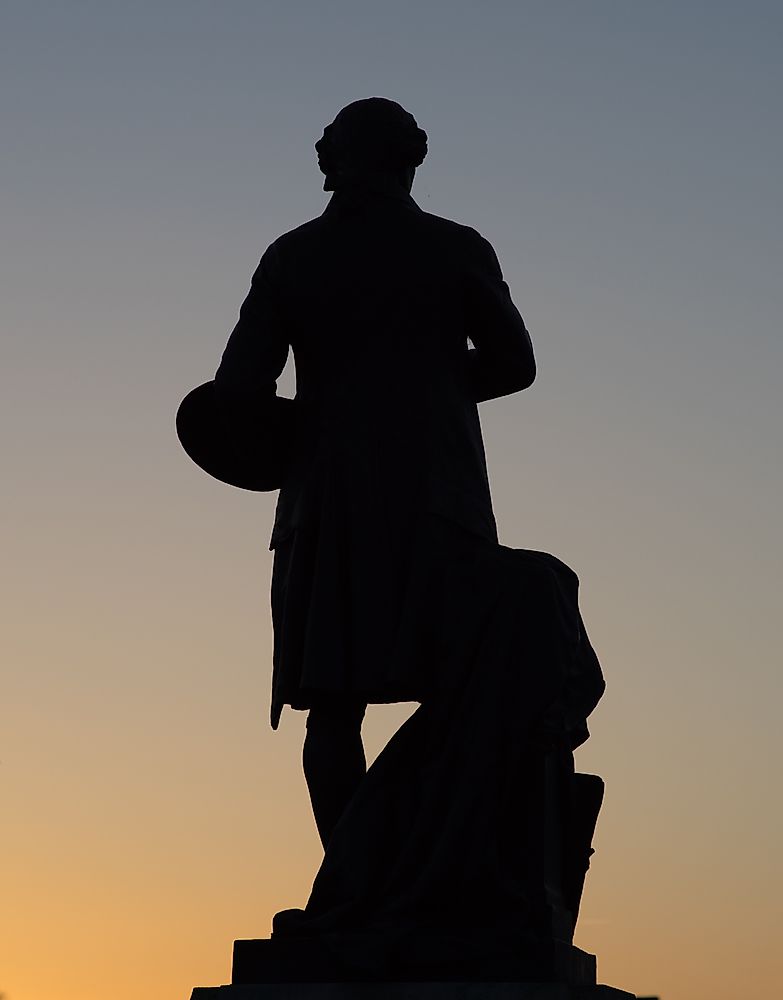Thomas Gainsborough - Figures Throughout History

Thomas Gainsborough was a British landscape painter and portraitist and is considered to be one of the greatest portraitists of the 18th century. Rising from a modest background as the son of a weaver, Gainsborough is recognized as one of Britain's most celebrated artists. He is credited as the originator of the British landscape school and was a founding members of the Royal Academy of Arts.
5. Death and Legacy
Thomas Gainsborough died of cancer on August 2nd, 1788, at age 61. He is buried at St. Ann’s Church in Kew, Surrey, based upon his request. Thomas Gainsborough and his rival, Joshua Reynolds, are known to be the most famous portraitists of the 18th century, and their works have been influential in the field of portrait art.
4. Challenges
Thomas Gainsborough had a public rivalry with former friend Joshua Reynolds, who was president of the Royal Academy. This rivalry escalated to the point at which Gainsborough was forced to remove his exhibits from the Royal Academy. The rivalry was also evident when the royal family appointed Joshua Reynolds as the royal painter at the expense of Gainsborough.
3. Major Contributions
Due to his increased exposure through the exhibition at the Society of Arts, Thomas Gainsborough was commissioned by the royal family to create portraits of King George III and other nobles. Gainsborough’s most famous work is a painting known as “The Blue Boy,” which is a portrait of the son of a local wealthy merchant. Another significant Thomas Gainsborough painting is a portrait of Mrs. Frances Villebois, known as “Miss Read,” which sold at auction in 2011 for more than $6 million.
2. Career
While in London, Thomas Gainsborough fell in love with the Duke of Beaufort's illegitimate daughter, Margaret Burr, and the two were soon married. Using the dowry he received from the nobleman, Thomas (then aged 20) set up his first studio in Ipswich and began to sell his landscape paintings. However, Gainsborough soon realized that landscapes were not in high demand, and instead focused his efforts on portraiture. Thomas moved his family to Bath, which had more upscale clientele and began studying portraiture under Sir Anthony van Dyck, and soon his work attracted large numbers of clients. Gainsborough’s rising reputation enabled him to showcase his work at an exhibition at the Society of Arts (modern Royal Society of Arts) in 1761.
1. Early Life
Thomas Gainsborough was born in a small town of Sudbury in Suffolk. His exact birth date is not known, but is traced to the spring of 1727. Thomas Gainsborough was youngest son of John Gainsborough, a local weaver, and his wife, the sister of Reverend Humphry Burroughs. Thomas was baptized on May 17th, 1727, in a Sudbury church. During his childhood, he expressed keen interest in painting and drawing, and made a simple self-portrait by the age of 10. Gainsborough’s mother had a penchant for painting flowers and encouraged Thomas to harness his talent. The young Thomas left Sudbury in 1740 and traveled to London with the intention of studying art. In London, Thomas trained under the tutelage of Hubert Gravelot, an engraver, and later became associated with William Hogarth’s Academy at St. Martin’s Lane. Thomas also worked under Francis Hayman at Vauxhall Gardens, where he assisted in decorating supper boxes, as well as the decoration of the Homas Coram Foundation for Children.











